Carmel de Nuit.
Whatever your thoughts about luxury retail, there is but admiration to be had for the brilliant art directors and designers who create high end window displays for some of the world’s most exotic stores.
I had long been struck by the skill on abundant display in Carmel’s windows around Christmas and this year resolved to photograph a few of the displays at night when reflections would be largely absent and the lighting effects as the designers envisaged them. When you realize just how small some of the windows are, I think you may join with me in breathless admiration of the skills of the artists doing this work.
It helps that my birthday is on December 21, the shortest day of the year, (in fact, coincidentally, I just hit 21), so I did not have to wait very long for the sun to set. The temperature was still a balmy 50F in coastal California when I ventured out at 8pm, after doing a preparatory dusk ‘walk through’ two hours earlier, noting the most interesting windows.
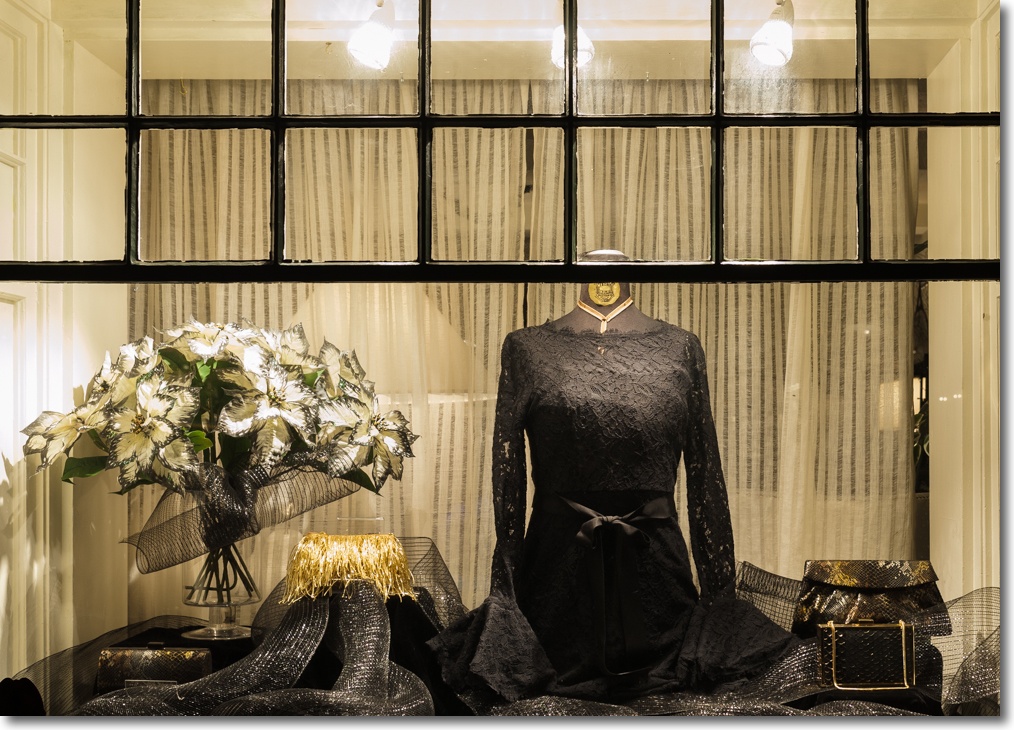
Sublime black lace dress, to die for.
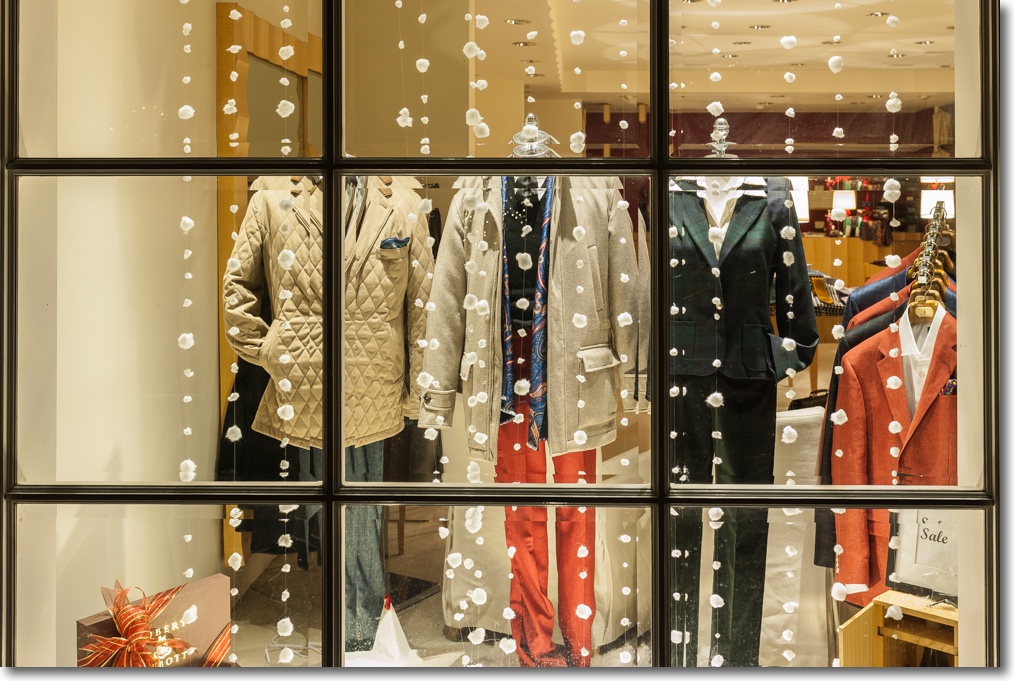
Let it snow. This never happens in Carmel, CA by the way.
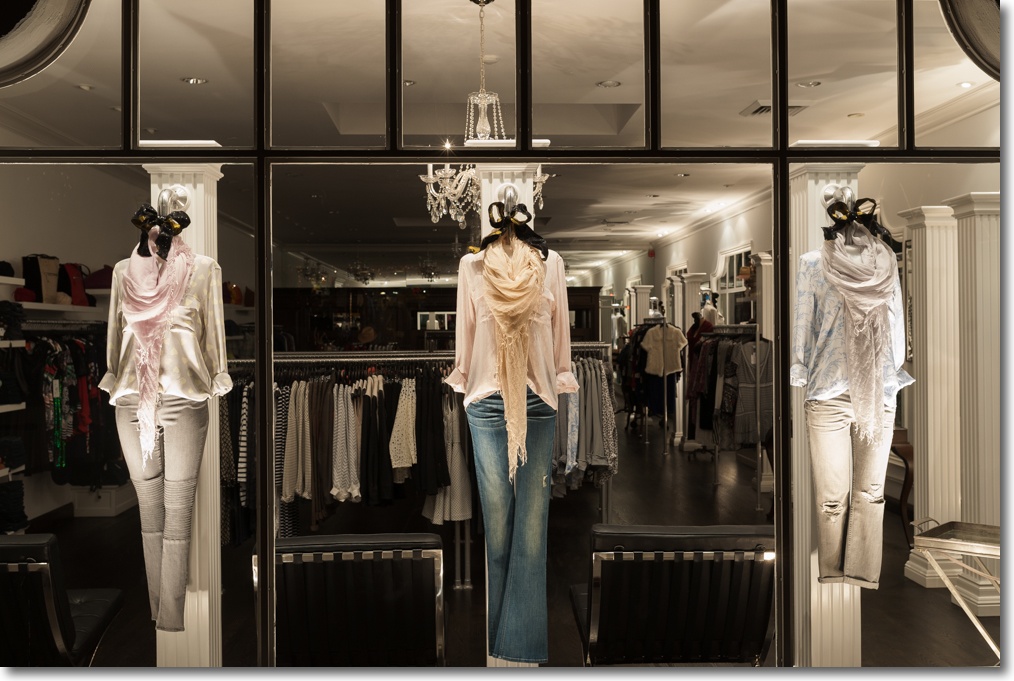
Every fold and crease just so.
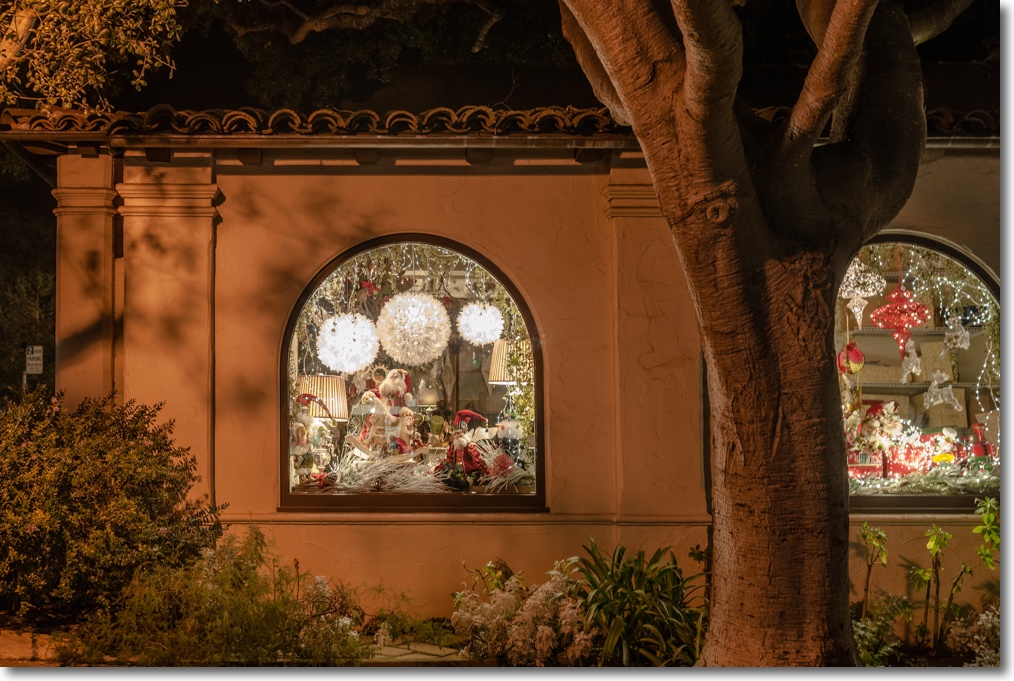
This is the sort of lighting O. Winston Link excelled at.
However, he did not have a digital sensor or Lightroom.
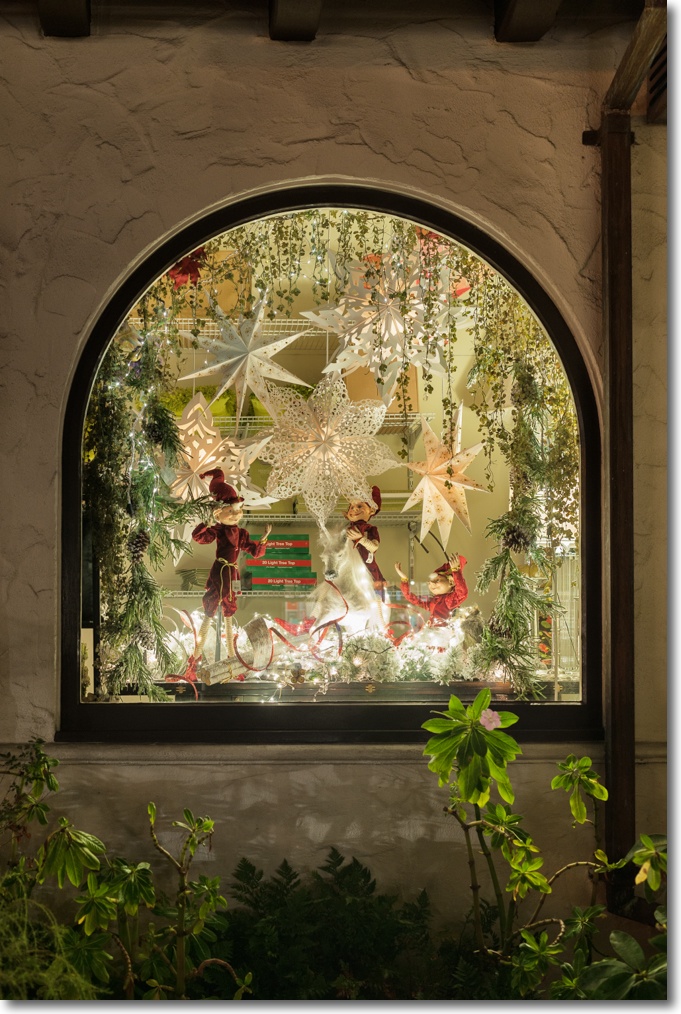
Merry elves in a truly magical display.
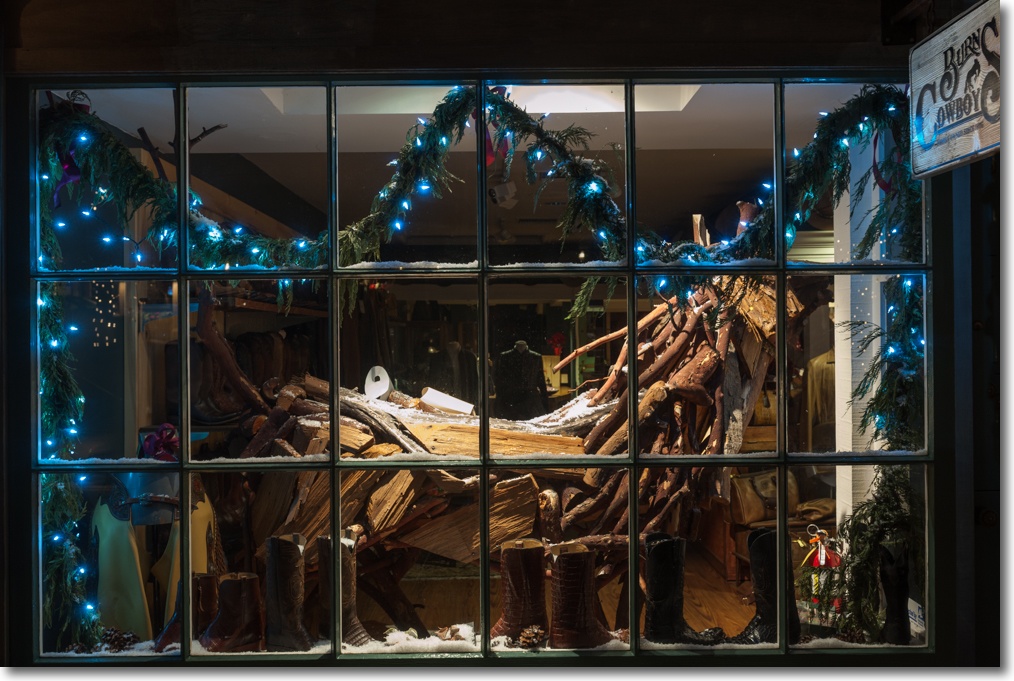
The pinnacle of top end retail, this is a cowboy store.
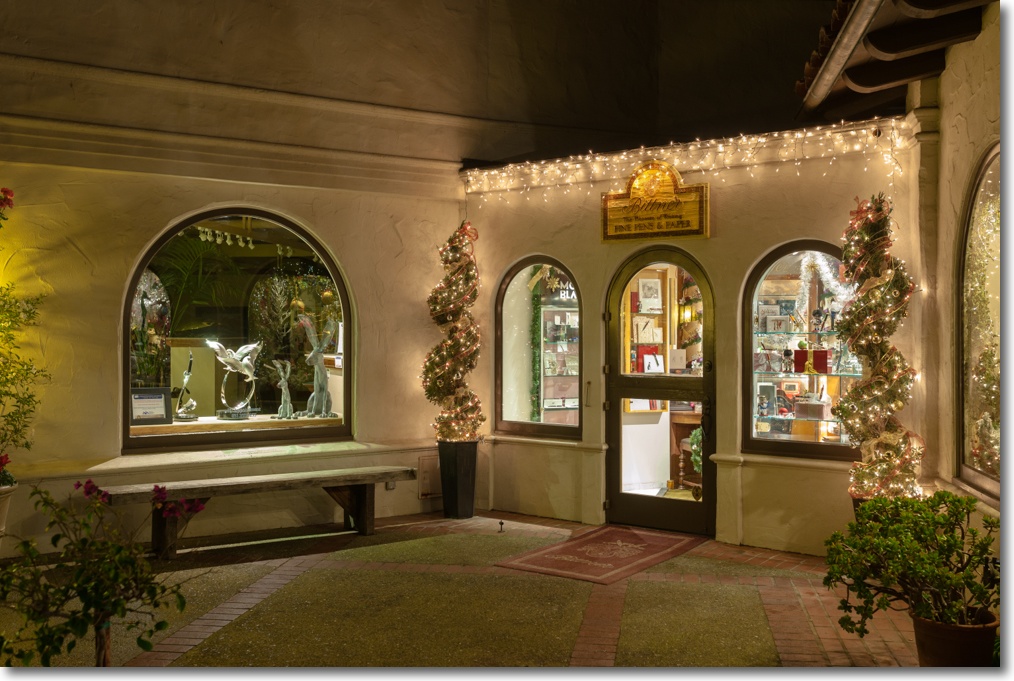
Writing instruments, for those yet to discover computers.
A ‘good’ pen can run you more than that new MacBook Air.
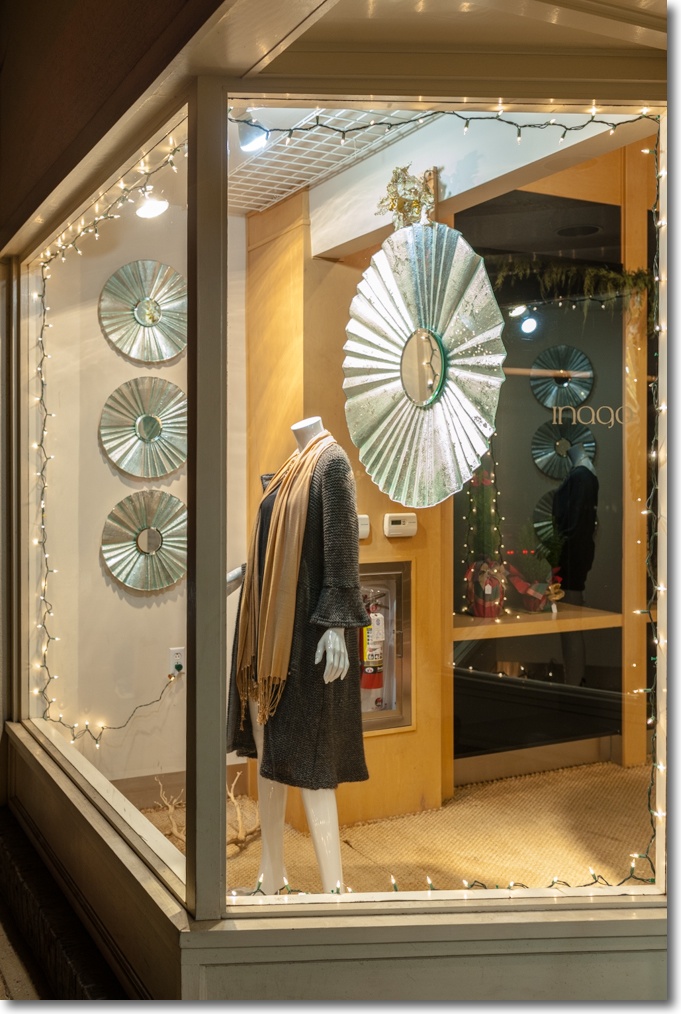
Inago, Carmel. One of the most elegant displays this year.
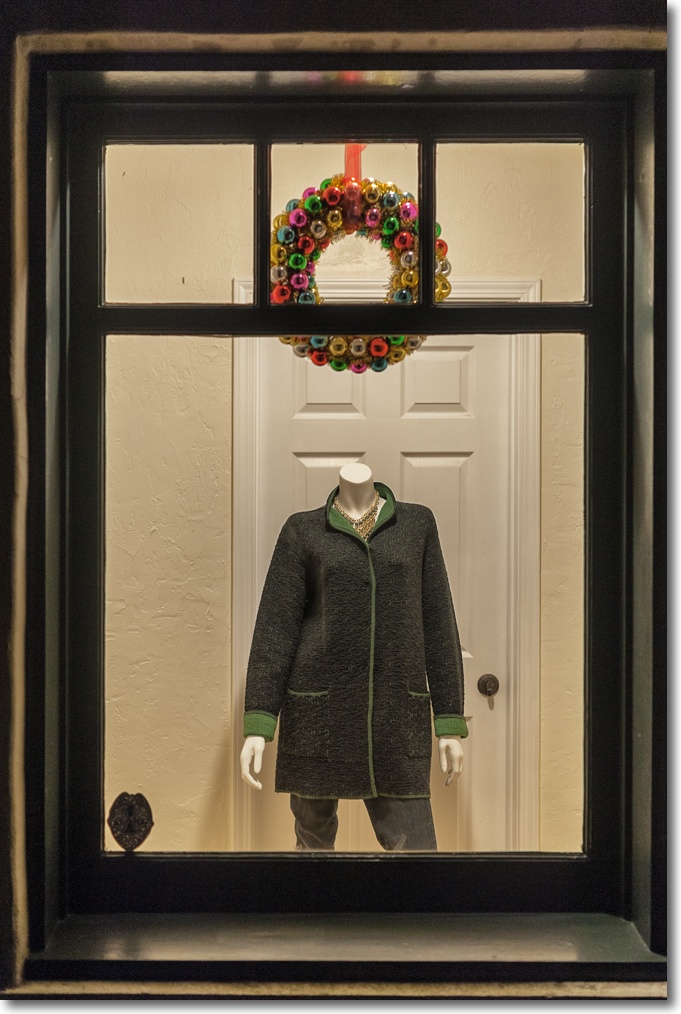
High style. Simple, severe, compelling.

Glass. A large space and proper lighting are needed to display these to best effect.
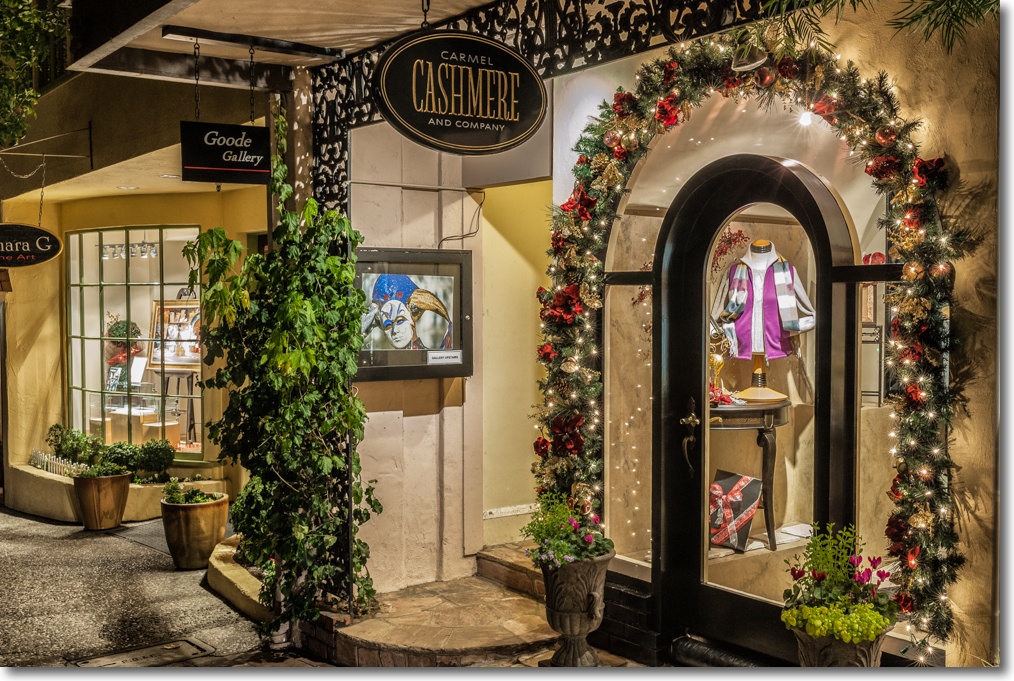
Christmas lights.
Much as I wanted to avoid its bulk and mirror slap, there was only one choice of hardware, the Nikon D3x with the 35mm f/1.4 Sigma. What’s that you say? Use mirror lock-up? Look, it’s hard enough to find the shutter button in the dark, let alone having to futz with all those menus.
Most of these are at ISO200 and f/4 or so, not that aperture matters with the Sigma. Its sole purpose is to vary depth of field. It’s that good. Exposures were mostly 1/2 to 2 seconds. You really want to avoid shutter speeds in the 1/30 to 1/8 second range, where mirror slap tends to destroy definition. Much longer and mirror-induced vibrations are a small percentage of the exposure time.
Challenges? Some garage language was involved, true, mostly directed at my tripod and the allegedly QR plate I use for the camera.
The Nikon D3x has maybe one stop of dynamic range in hand over the Panasonic GX7 and even then you really want to underexpose to keep the highlights from burning out, bringing the shadows up in post processing when needed. The dynamic range of these starkly lit night windows is high.
Even with a sheet of mediocre quality window glass interposed between each subject and the camera’s sensor, the quality of these images is all you could wish for. Carmel retailers make sure to keep their window glass spotless which does not hurt!
There may be better lenses than the 35mm Sigma (and lots of 35mm Sigmas are worse than mine, given Sigma’s poor QC and what I had to go through to get a ‘good’ one) but my debugged sample delivers high resolution and accurate AF. However, life is too short to risk buying another Sigma optic, so I can only recommend a Sigma lens if you can handle the prospect of multiple returns of faulty ones.
Season’s Greetings, dear readers.